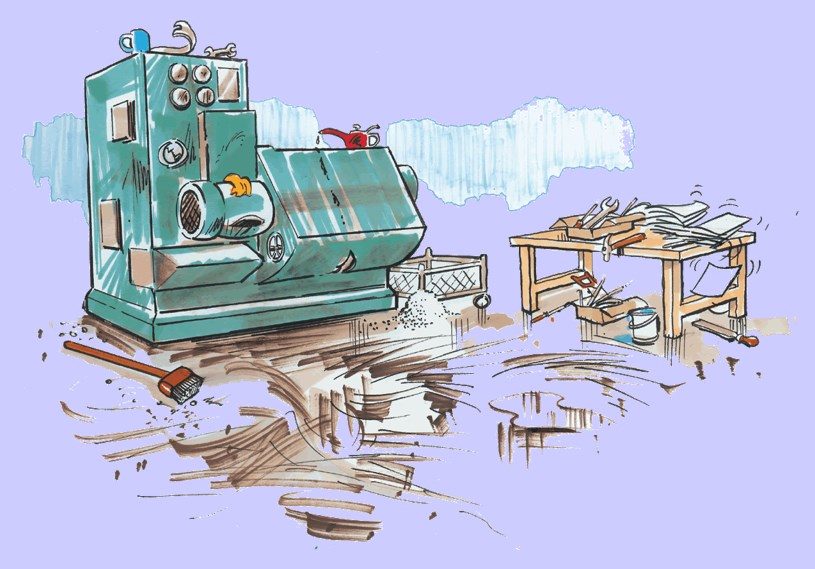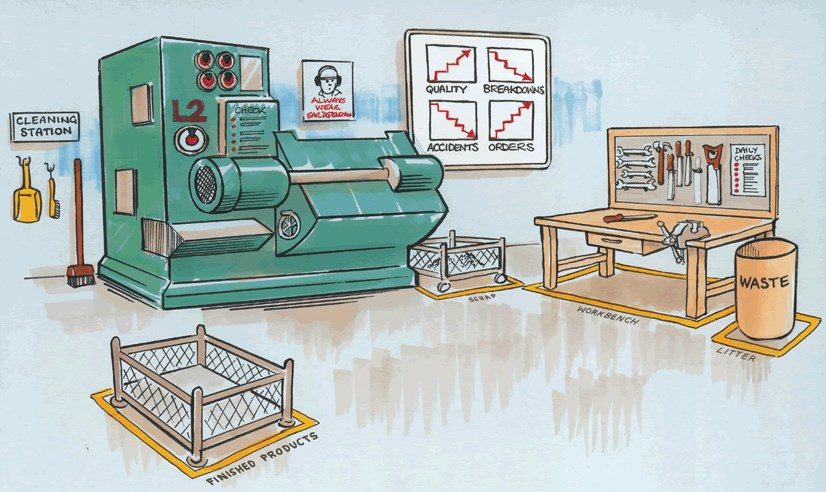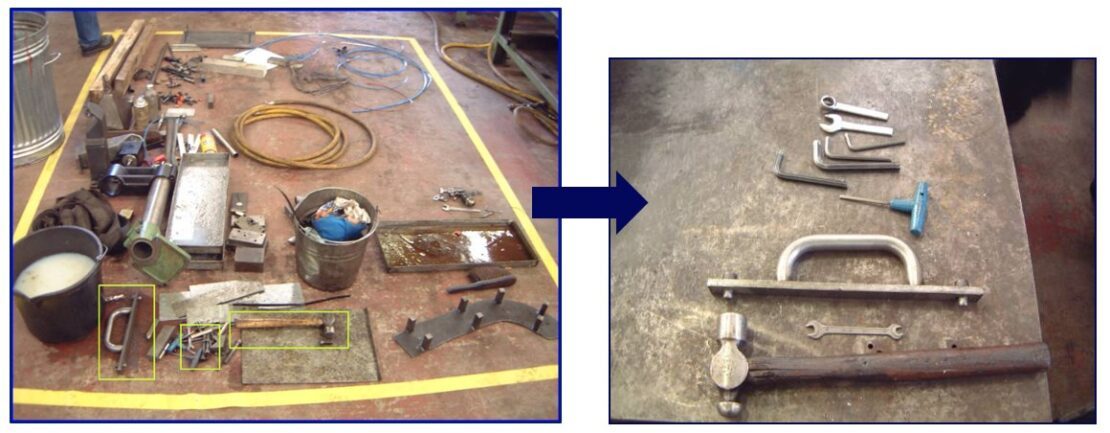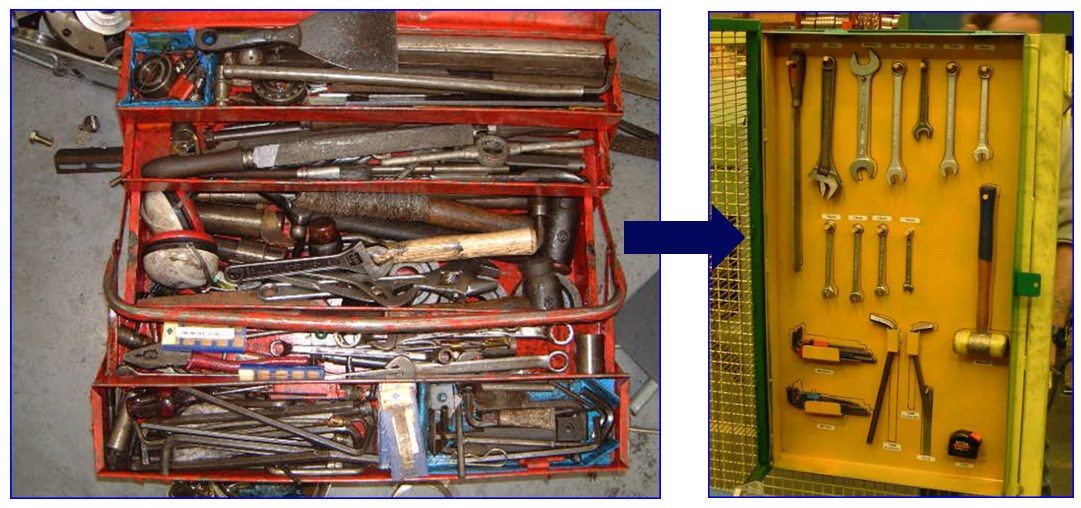Posted on: 28th April 2017 by Private: Helen Forrest
It’s very easy to get the wrong idea about 6S. I’ve lost count of the number of times someone has pointed to a board with a broom and dustpan fixed to it labelled ‘Cleaning Station’, when I’ve enquired about the presence of a 6S programme in a plant.
It’s true that cleaning does play an important part in 6S, but it is so much more than a housekeeping exercise. I’m going to use this blog to briefly explain the true purpose of 6S. Done properly, it can be one of the most effective and low-cost improvement tools you could ever employ.
What’s it all about and why’s there an extra S?
6S is a five step methodology to create a safe and stable working environment. By going through the process, you will improve your working environment. You will create a safer, more productive and better place to work. Furthermore, by following the steps, it’s possible to maintain the improved condition over time.
This methodology used to be known as 5S. The extra S stands for Safety, so sometimes it’s referred to as 5S + Safety. Safety should be the most important consideration in every step of a 5S programme anyway. However, the additional S creates a greater awareness and more of a focus.
I’ll explain what each means in more detail later, but here are the six steps:
SORT, SET-IN-ORDER, SHINE & CHECK, STANDARDISE, SUSTAIN, SAFETY.
What’s the point of 6S?
First of all, 6S creates a safe working environment. It highlights safety issues and organises the workplace with safety as a priority. One of the aims of 6S is zero accidents and zero near misses.
6S creates a work area that’s organised and fully functional. This then becomes the standard. Consequently, it’s easy to spot when something’s wrong or missing and put it right. With everything in place and all machines and tools working properly, it’s possible to implement standardised ways of working.
Because the people who work in the area implement 6S, they create the standard. As a result, they take ownership of their workplace and are fully involved in improving and maintaining it.
6S is about changing the mind set and behaviours of the whole workforce. Everyone should be involved in 6S, whether they work in an office or the shop floor.
Life without 6S

Can you imagine working on a machine which is dirty and surrounded by all sorts of tools, materials, paperwork and rubbish? As well as being a thoroughly unpleasant place to work, it’s probably quite dangerous too. For example, you might trip on some of the clutter. The machine could be so dirty that an oil leak is not clearly visible, meaning you could slip on this too. Of course, at some point the machine is likely to break down.
As for all the tools, you probably waste time looking for the one you need and, when you eventually find it, it’s usually broken or in need of maintenance. Not to mention the strain from having to repeatedly bend over to get it. Furthermore, the product you’re making is at risk from all the dirt and debris in the area. On top of all this, you want to develop the process but there’s no room for expansion. It’s going to cost money to create larger work areas.
Finally, can you imagine what your customer would think if they took a factory tour? After all, you only get one chance to make a good first impression.
So, to summarise, without 6S in place you’re risking a workplace accident or absence due to ill health, machine downtime, reduced efficiency, a poor quality product and a very bad impression!
Life with 6S in place

Now imagine the same scenario but with a clean machine that’s in full working order. When the 6S team cleaned the machine, from the top down, they inspected it and fixed all the problems. All areas surrounding the machine are now clean and free from clutter.
The only tools available are the ones you need to do the job. They are clean, well-maintained and they live on a shadow board. It’s now easy to see where they are and if one of them is missing. The position of the shadow board itself is close to where you work and it’s in an ergonomic position.
Everything which is not fixed down has a ‘home’ which is clearly marked out and labelled. Immediately you can see if something is missing or out of place. This is the standard which everyone keeps to, and there is a system of regular checks to help them.
Now that 6S is in place, your working environment is a safe and pleasant place. You’ve reduced machine downtime, your output has increased and your products are free from damage and contamination. Furthermore, by removing all the clutter, you’ve made space for future development. Now you no longer need to create a bigger workplace.
Finally, when your customers visit the factory, they see an organisation that is in control. They can see you take pride in your work and this gives them peace of mind about their products.
So what do the 6S’s mean?
SORT: separate what’s necessary to do the job from what’s not necessary. Remove all the unnecessary items.

SET-IN-ORDER: Create a visual location for all the necessary items. Make sure the locations are easy to see and get to; “a place for everything, and everything in its place.”

SHINE & CHECK: Manually clean the work place (both as an initial blitz and an ongoing activity) to highlight any problems. Cleaning is to look for faults, not just to make the workplace look better.
STANDARDISE: Monitor the 6S condition to make sure it is maintained. Find ways to make the standard easy to maintain.
SUSTAIN: Everyone understands 6S and works towards maintaining the condition. It becomes a way of life.
SAFETY: Think about how you can increase safety when doing each of the previous 5 steps.
As you can see, 6S is so much more than housekeeping! In fact, it’s the first step in Lean continuous improvement and the basis for preventative maintenance.
How do you do it?
There is a lot of information about 6S on the internet. It’s not difficult to find a guide on how to run your own 6S programme.
However, many of our clients feel that outside help, in the form of a workshop, is the best way to get started. That way, they give the activity the time and attention it warrants which means they’re more likely to succeed in the long term. Furthermore, they’re assured of training and standard-setting by consultants with years of experience delivering 6S activities to world-class standards.
If this is something you’d like to explore further, please get in touch.



